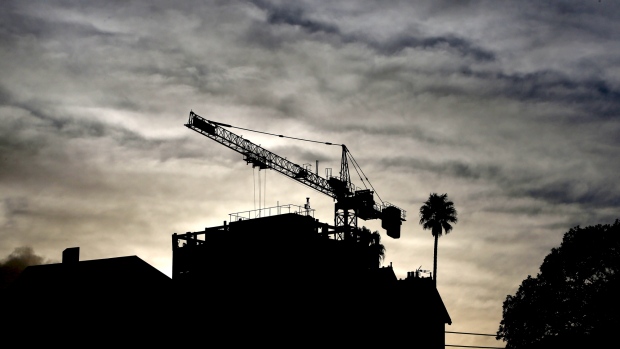Apr 29, 2019
Why are economists so bad at forecasting recessions?
, Bloomberg News

In 1966, four years before securing the Nobel Prize for economics, Paul Samuelson quipped that declines in U.S. stock prices had correctly predicted nine of the last five American recessions. His profession would kill for such accuracy.
With recession talk returning to haunt financial markets and the corridors of central banks, a review of the past suggests that those who are paid to call turning points in economic growth have a dismal record. Unlike the stock market, they’re more likely to miss recessions than to predict ones that never occur. The lowlight, of course, was the widespread failure to forecast America’s Great Recession, which began in December 2007—nine months before Lehman Brothers filed for bankruptcy.
In February, Andrew Brigden, chief economist at London-based Fathom Consulting, worked out that of 469 downturns since 1988, the International Monetary Fund had predicted only four by the spring of the preceding year. By the spring of the year in which the downturn occurred, the IMF was projecting 111 slumps, fewer than a quarter of those that actually happened. In a post on his firm’s website, Brigden wrote that while IMF economists monitoring Equatorial Guinea, Papua New Guinea, and Nauru can walk tall for their recession calls, the rest pretty much flopped. “Since 1988 the IMF has never forecast a developed economy recession with a lead of anything more than a few months,” he says.
IMF economists point out that they’re not alone in missing downturns. A recent working paper by Zidong An, Joao Tovar Jalles, and Prakash Loungani discovered that of 153 recessions in 63 countries from 1992 to 2014, only five were predicted by a consensus of private-sector economists in April of the preceding year. And the economists tended to underestimate the magnitude of the slump until the year was almost over.
The shortcomings of economists are in the spotlight again as the world economy traverses a soft patch. Growth in China continues to cool, while Europe is looking fragile. Italy is already in recession, and Germany and France risk stagnating. On March 22 the U.S. bond market flashed a warning sign when the yield on 10-year Treasury notes dipped below the yield on three-month Treasury bills. That reversal in the normal pattern of interest rates—known as an inversion of the yield curve—has generally been followed by a recession, although the length of time before a downturn varies widely. Meanwhile, in a recent survey of its members, the National Association for Business Economics found 42 per cent anticipate a U.S. recession beginning next year, along with 10 per cent predicting one this year and 25 per cent expecting one in 2021.
What’s behind economists’ poor forecasting performance? The main reason is that it’s simply a hard job. Information about the economy is incomplete and arrives with a lag. And turns in the economy tend to be abrupt. Some are caused by financial shocks, such as stock market panics, which are themselves unpredictable.
Loungani, who works at the IMF, says a lack of incentives may also be partly to blame. Unlike portfolio managers, economists don’t have money riding on their ability to accurately predict downturns, and misses are rarely career-ending.
Groupthink may also pose an obstacle. Professional forecasters feel safer in a crowd rather than sticking their necks out with a recession call. Then there’s a bias toward clinging to predictions even after contrary evidence emerges. The paper co-authored by Loungani shows that failing to forecast a recession is a much more common error than warning about one that doesn’t occur. On the other hand, one way to make sure you never miss calling a recession is to constantly predict one—but be vague about when it will arrive. Stretching out the time horizon is a common gambit. Predicting a contraction 18 to 24 months in the future is a reasonable wager: Since 1959 the chance that the U.S. economy will be in a recession in any given month has been about 13 per cent, according to Tom Stark, assistant director of the Real-Time Data Research Center of the Federal Reserve Bank of Philadelphia. (Stark says that stat can’t be used to calculate the probability of a recession in the next, say, two years.)
Loungani nevertheless sees some room for optimism in economists’ current behavior. In previous cycles, a lot of analysis was devoted to how times had changed and why the business cycle had been tamed, with more soft landings and fewer outright recessions. Stung by the failure of predicting the last recession, the profession has spent the past decade examining how expansions come to an end and discussing the policy tools that may be needed to stabilize an economy that’s slowing. JPMorgan Chase & Co. economists currently tell clients there’s a 40 per cent chance of a downturn over the next year. “That’s a better narrative than declaring we are in a new economy and the business cycle is dead,” Loungani says.


